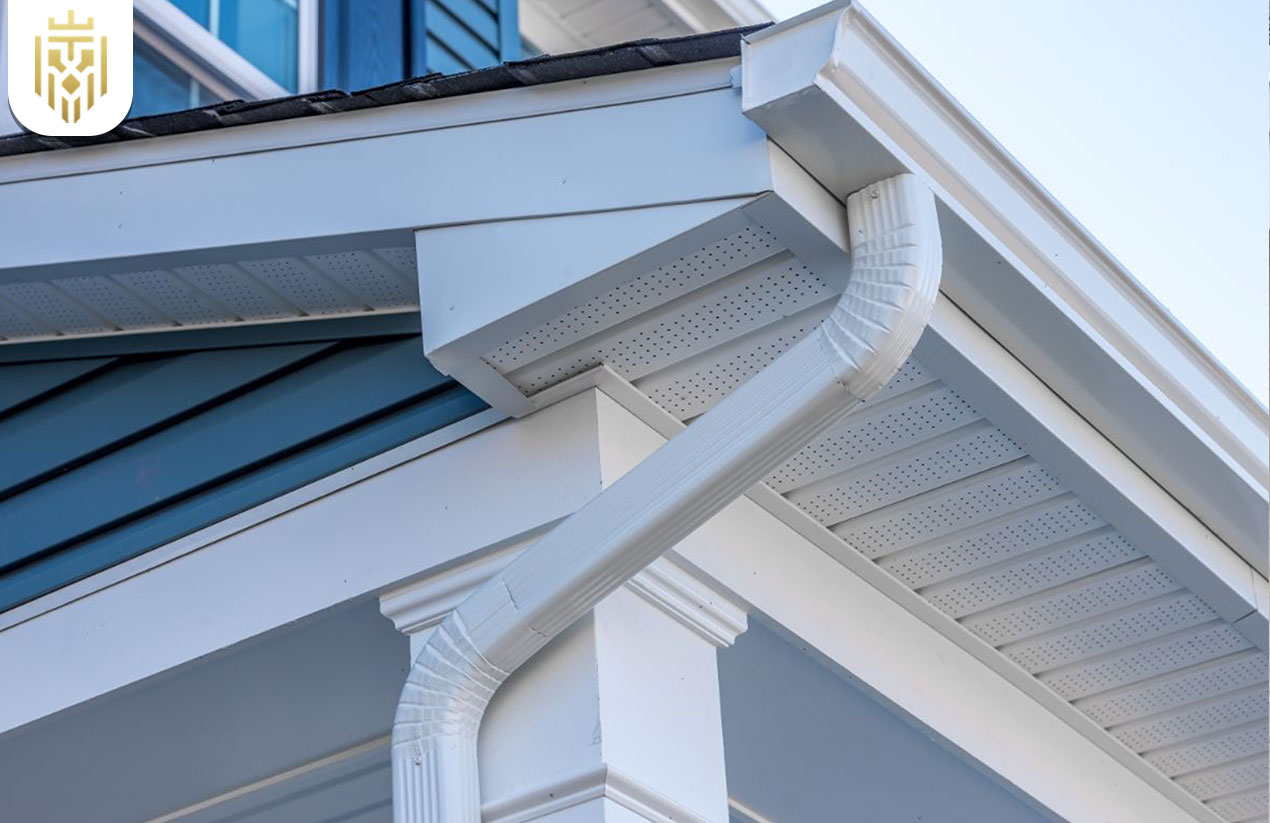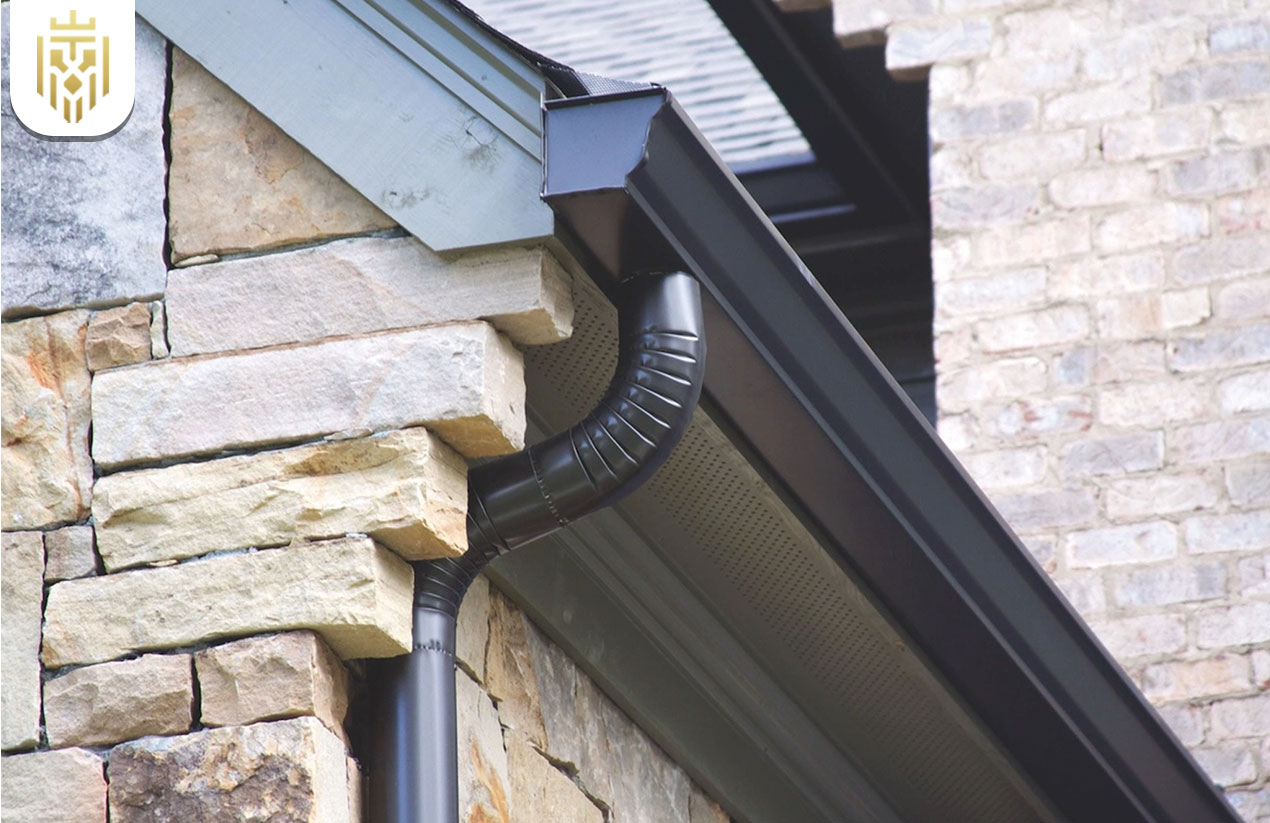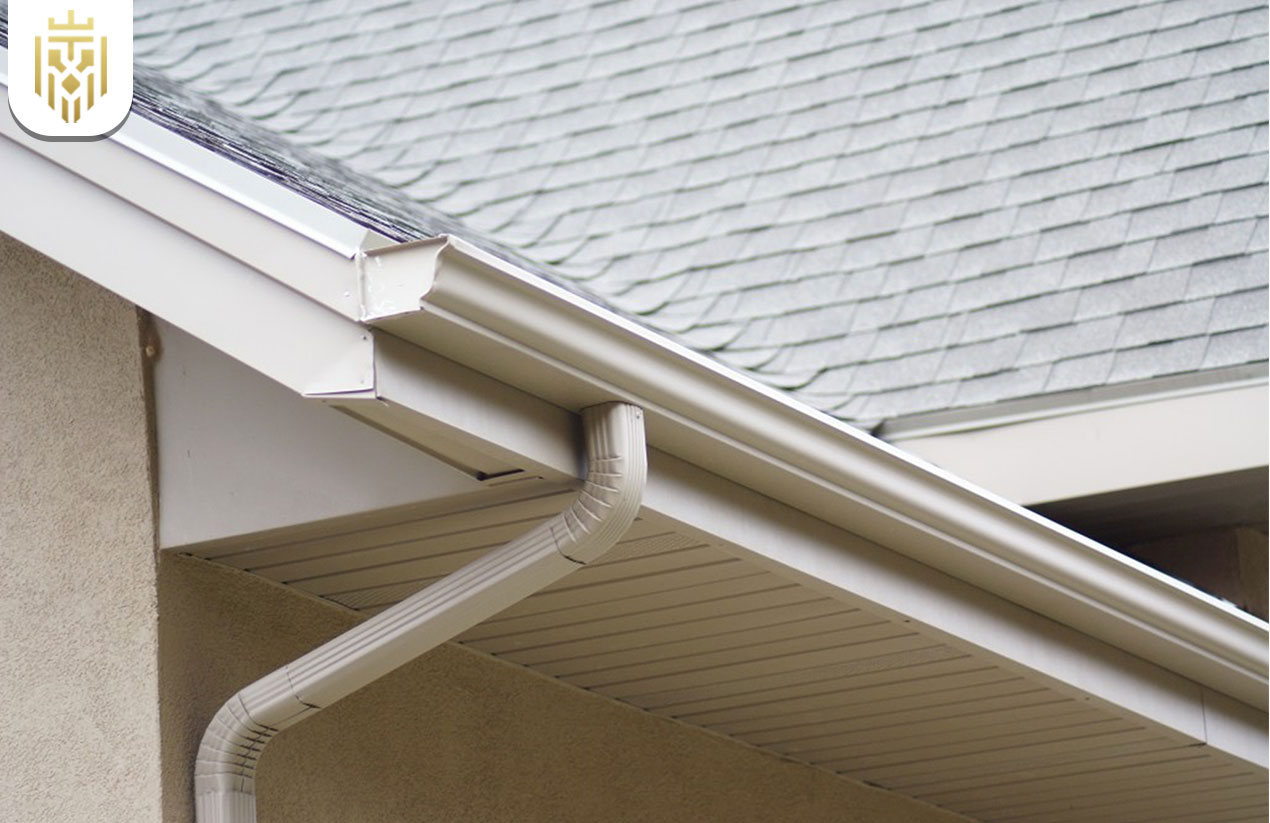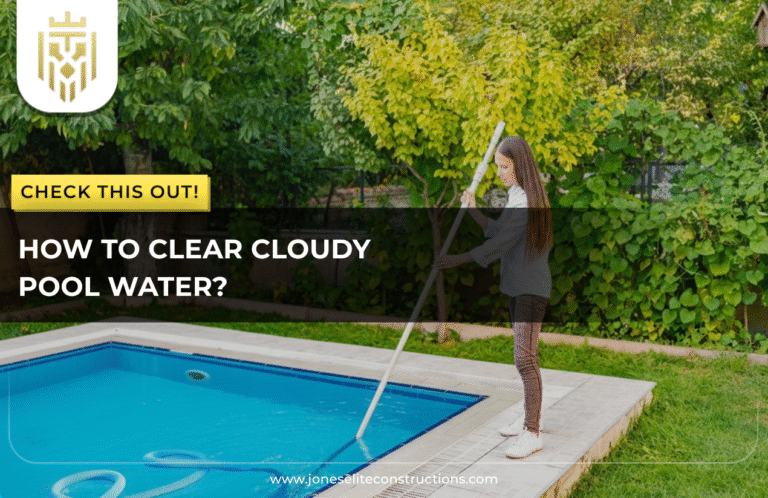What Are K-Style Gutters?
K-style gutters are a very commonly found style of rainwater drainage system with an elegant shape reminiscent of crown molding. True to their name, the side profile of these water gutters resembles the letter “K” in a loose sense. The flat side allows these gutters to be nailed directly to the fascia. K-style gutters afford a more angular and modern look compared to rounded systems and go together well with contemporary and traditional homes.
Some materials commonly used for fabrication include aluminum, vinyl, steel, and copper. In addition, they vary in size to accommodate differing volumes of rainwater runoff.
Benefits of K-Style Gutters

K-style gutters offer several advantages over other gutter types, making them a popular choice for residential properties.
High Water Capacity
K-style gutters can hold more water compared to those with rounded alternatives. They have more or less flat backs with curved fronts that afford deeper troughs, ensuring very good performance in an area that receives heavy rainfall.
Easy to Install Against Fascia
Owing to their flat back, K-style gutters can be nailed directly onto the fascia board without any annoying bracket work, hence easy installation and reduced labor times.
Aesthetic appeal
The crown molding-like profile adds a decorative element to your roofline. It’s a preferred style for homeowners who want their gutters to blend with or enhance the architecture of their homes.
Structural Strength
The angular shape of K-style gutters provides added rigidity. They are less likely to bend or warp under pressure compared to other gutter styles, which adds to their longevity and reliability.
Difference Between K-Style Gutters and Other Types

Choosing the right gutter style means understanding how each one differs. Here’s how K-style gutters compare to some of the other common types of gutters.
K-Style Gutters vs. Half-Round Gutters
Half-round gutters have a smooth, curved profile and are commonly used in historic or older-style homes. Their elegance belies the fact that they have a smaller water capacity and pose more difficulty during installation as compared to K-style gutters. K-style sets up better for redirecting water away from your house with fewer hangers for support.
K-Style Gutters vs. Box Gutters
Generally, box gutters find themselves gracing the roofs of commercial establishments. It has got a rectangular profile. Being embedded into the roof overhang or edge makes it difficult to access and maintain. Conversely, from the exterior, K-style gutters get mounted and are easily cleaned, repaired, or replaced.
K-Style Gutters vs. Fascia Gutters
Fascia gutters are built right into the fascia board and are used primarily in another form of modern house design. Even though they are sleek and integrated, their maintenance is more expensive, and replacement is impossible. A K-style gutter offers a similar kind of beauty and generation with flexibility and ease of maintenance.
How to Install K-Style Gutters?

Installing K-style gutters requires planning and precision to ensure they work efficiently and last long. Here’s a step-by-step overview.
Measure and Plan
First, measure the entire roofline of the workings for gutter installation, determining the slope and marking potential locations for downspouts to allow maximum drainage.
Cut and Assemble Gutters
Cut the gutter sections to length with a hacksaw or miter saw. Assemble any elbows or connectors, sealing the joints with sealant and securing them with rivets or screws.
Install Gutter Hangers
The hangers support the system and maintain the correct pitch. Place hangers every two feet for standard weights and every 18 inches for heavier gauges, like steel or copper.
Mount the Gutters
Raise sections of the pre-assembled gutters and hang them from the fascia through the installed hangers, keeping a gentle slope toward the downspouts for drainage.
Add End Caps and Downspouts
Seal the recovered ends of each gutter run with end caps, and install downspout outlets wherever required. Attach the downspouts to the wall with brackets every 6 feet.
Test the System
The moment everything is done, flush it with water and ensure that the system is not leaking and that the water is flowing correctly toward the downspouts.
Maintenance Tips for K-Style Gutters
Keeping your K-style gutters clean and functional is key to long-term performance.
Clean the Gutters Twice a Year
At least two times a year, in spring and autumn when leaf-fall predominates, keep the leaves and debris officiously out of the gutters to avoid clogging and thus overflow.
Check for Leaks
After areas of heavy rain, check joints and seams for leaks. Use a waterproof sealant to repair if there are minor issues while waiting until things get bad.
Install Gutter Guards
Installation of gutter guards will help reduce the frequency of cleaning by restricting debris while permitting passage of water.
Check for Proper Alignment
Due to the property of sag or misalignment over time, be sure they still have their original slope for good water drainage.
FAQs
1) What Are K-Style Gutters?
Rain gutters called K-style gutters mainly feature an angular profile that bears a slight resemblance to crown molding. They are generated for their capacity to hold large amounts and the beauty they impart to a building.
2) How to Install K-Style Gutters?
To install the gutters: measure your roof-line, cut and assemble your gutter sections, install your hangers, mount the system, attach your downspouts and caps, and test to see that the water flows well.
3) What is the Difference Between K-Style vs. Half-Round Gutters?
K-style gutters offer a higher water capacity and are stronger structurally, while half-round gutter systems are more decorative but less efficient and quite harder to install.
4) What are the benefits of K-style gutters?
Efficient water management, easy installation, high structural strength, plus an attractive look that complements many architectural styles.









